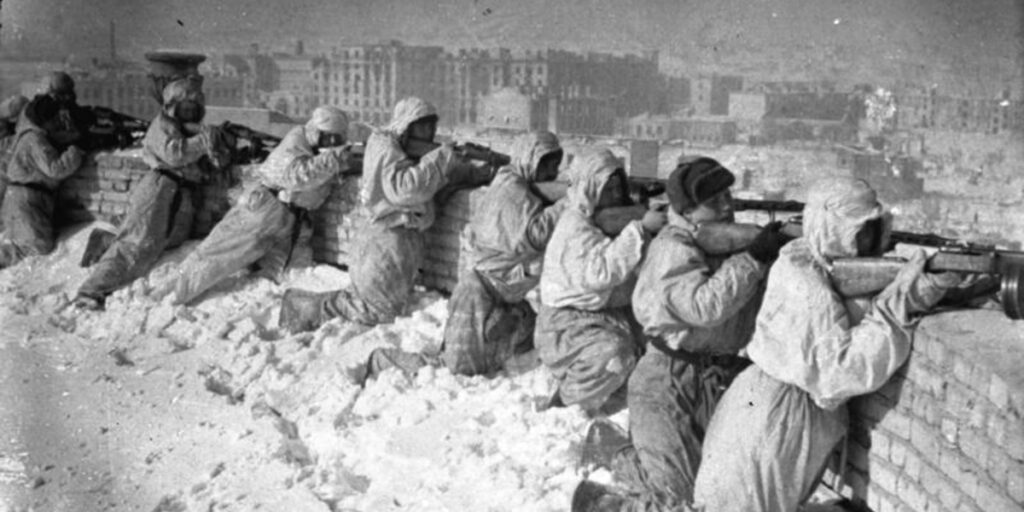The Battle of Stalingrad, fought between August 23, 1942, and February 2, 1943, was a critical turning point in World War II. It was a strategic battle between Nazi Germany and its allies against the Soviet Union and became one of the bloodiest battles in history. The outcome of the battle determined the fate of Adolf Hitler’s Nazi regime. Stalingrad was of great importance to both sides, as it provided strategic advantages and held immense symbolic significance for the Soviets. The battle was brutal, with intense fighting and heavy casualties. The Soviet counteroffensive led to the encirclement and surrender of the German forces, marking a major victory for the Allies. This battle shifted the balance of power in Europe and boosted Allied morale. The Battle of Stalingrad is remembered as a symbol of resilience and sacrifice, serving as a reminder of the horrors of war.
The Battle of Stalingrad: A Turning Point in World War II
Introduction
The Battle of Stalingrad, fought between August 23, 1942, and February 2, 1943, was a critical turning point in World War II. It was a strategic battle between Nazi Germany and its allies against the Soviet Union, and it became one of the bloodiest and most devastating battles in human history. The outcome of the battle had far-reaching consequences for the course of the war and ultimately determined the fate of Adolf Hitler’s Nazi regime.
The Importance of Stalingrad
Stalingrad, a major industrial city on the banks of the Volga River, was of great importance to both the Germans and the Soviets. Capturing the city would have provided the Germans with a significant strategic advantage, cutting off crucial Soviet supply lines and opening up a pathway towards the oil-rich Caucasus region. For the Soviets, holding Stalingrad was a matter of immense national pride and symbolic significance. Stalin, the Soviet leader, made it clear that the city had to be defended at all costs.
The Brutal Battle
The battle began with a massive German offensive, consisting of highly skilled and well-equipped troops that initially pushed deep into the city. The Soviets, however, fiercely resisted, engaging in brutal street-to-street and hand-to-hand combat. The fighting was relentless, with both sides suffering heavy casualties. The city was reduced to rubble, and its civilian population endured unimaginable suffering.
Turning Point: Soviet Counteroffensive
Despite facing overwhelming odds and initial setbacks, the Soviet forces, under the command of General Georgy Zhukov, launched a counteroffensive in November 1942. They encircled the German Sixth Army and cut off their supply lines, trapping over 250,000 German soldiers in Stalingrad. The battle turned into a grueling siege, with the trapped Germans suffering from hunger, cold, and disease. The Soviets relentlessly bombarded the trapped army, leaving them weakened and demoralized.
German Surrender and Aftermath
On February 2, 1943, the German commander, Friedrich Paulus, finally surrendered. Only around 90,000 German soldiers remained alive, while the rest had perished. The Battle of Stalingrad marked a turning point in the war. It was the first time the Germans had suffered such a significant defeat, and it shattered Hitler’s myth of invincibility. It also provided a major boost to the morale of the Soviet Union and its allies.
International Significance
The Battle of Stalingrad had immense international significance. It marked a major shift in the balance of power in Europe, as it halted the German advance and placed them on the defensive for the remainder of the war. It also boosted Allied morale and strengthened the resolve to defeat Nazi Germany. It demonstrated the strength and determination of the Soviet Union, which played a crucial role in the ultimate victory over the Axis powers.
Legacy and Remembrance
The Battle of Stalingrad left an indelible mark on history. It is remembered as one of the most crucial battles fought during World War II and a turning point in the conflict. The city itself was left in ruins, and the loss of life was staggering. However, Stalingrad became a symbol of resilience and sacrifice, highlighting the bravery and determination of both the soldiers and civilians involved. Today, the Battle of Stalingrad is commemorated as a reminder of the horrors of war and the triumph of the human spirit.
